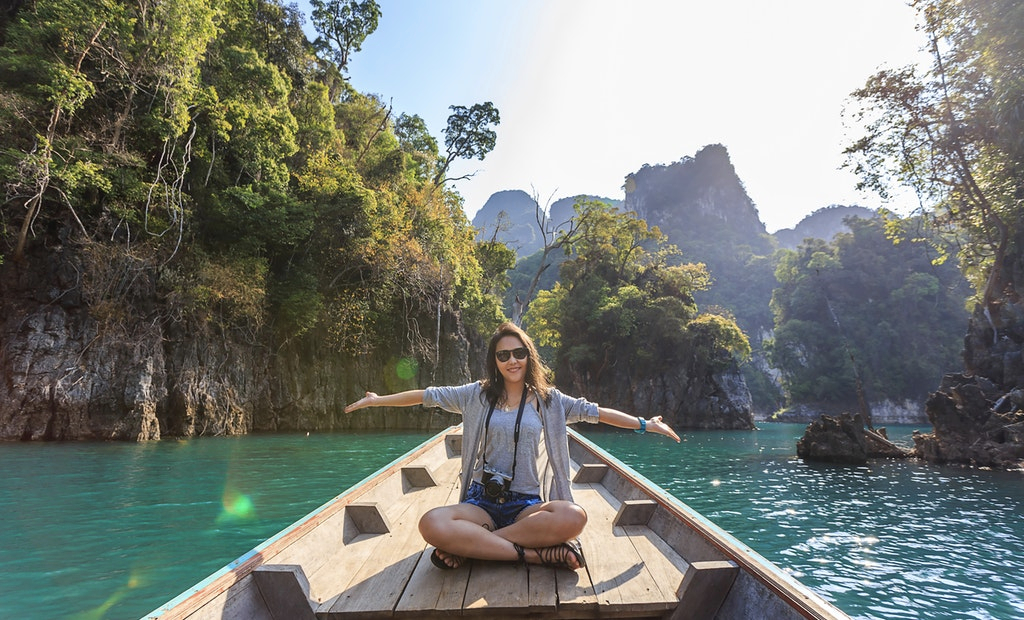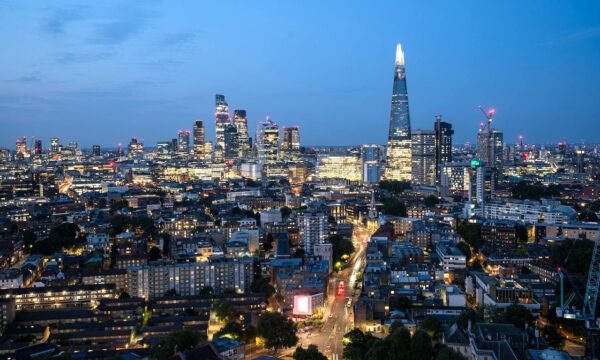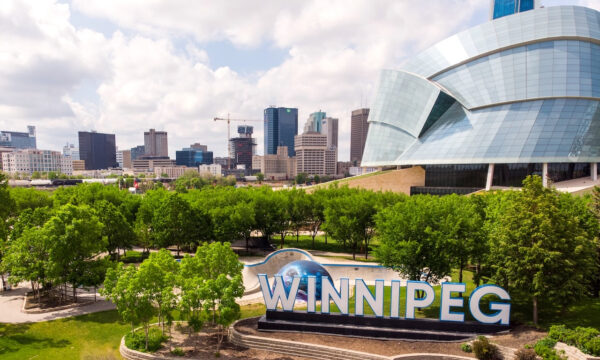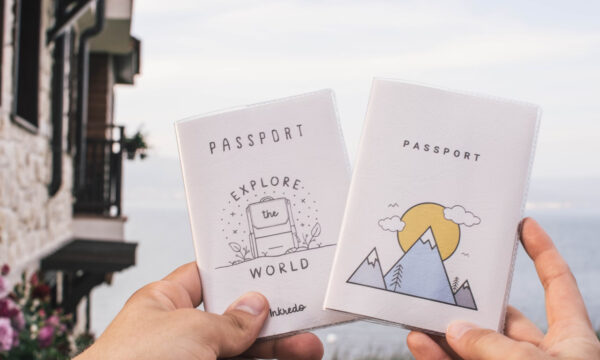Why Hollywood blockbusters can be a blessing for local tourism

Choosing the correct filming location can be critical to a blockbuster’s success, especially when a strong sense of geography becomes powerfully ingrained in the on-screen story. Imagine if Richard Curtis’s Notting Hill had been called Oxford Circus or Chancery Lane instead. Choosing the perfect backdrop doesn’t only benefit the cast and crew either – when a film location really makes a statement, the financial rewards can also be huge for the local residents.
This comes as a result of film tourism, where people plan their holidays based on the setting of their favourite movies. For example, Harry Potter fans travel to London’s King’s Cross to see Platform 9 ¾, while lovers of Leonardo DiCaprio may flock to Ko Phi Phi Le, the Thai island where The Beach was filmed. And with Disney’s live-action Mulan due out later in 2020, New Zealand’s Waitaki district is expecting a similar boom thanks to the stunning landscapes featured in the film.
An influx of visiting cinephiles also means plenty of money will be pumped into the tourism sector, which can serve a number of purposes for the country in question. Here are just three of the nations whose economies have greatly benefited from their pivotal roles in Hollywood blockbusters.
The Jungle Book boosted Indian tiger conservation
From Eat Pray Love to Slumdog Millionaire, there have been many wide-reaching Hollywood movies filmed in India, with numerous visitors flying out there to reenact their favourite scenes. It’s been estimated that India will generate $3 billion from film tourism by 2022, thanks to the million movie-loving travellers poised to visit. And with The Jungle Book triggering a huge interest in India’s tigers, film tourism has also helped increase the endangered animal’s population.
Rudyard Kipling’s 1894 book was retold to the masses through two highly successful Disney adaptations – first animated in 1967, then remade as a live-action/CGI picture in 2016. Since that original cartoon, fans around the world have been inspired to travel to India’s forests in search of tigers like the villainous Shere Khan. This has been detailed by The Telegraph’s Mike Unwin who visited the Kanha, Pench and Satpura National Parks a month before the release of the most recent film. These parks are some of the most popular worldwide destinations offered by safari companies like Natural High, who actively invite would-be explorers to “make a safari in the footsteps of Kipling’s Jungle Book”.
Recent statistics show that India’s wild tiger population has grown by 33% in four years and it’s believed that tourists are partially responsible for this increase. Founder of the TOFTigers charity alliance Julian Matthews notes that when “visitors pay to see the mystical cat in its mythical lands”, authorities are held accountable for preserving the tigers and their habitats. He believes this is why India’s Kawal Tiger Reserve – “a park nobody has ever heard of and few care about” – lost its last tiger to poaching in 2018. Conversely, better-known conservation sites are actually “overfull” of tigers, according to scientists from the Wildlife Institute of India. The parks that have enjoyed promising population increases surely have The Jungle Book to thank for inspiring fans to encounter India’s big cats in the real world.
Mamma Mia! countered Greek political turmoil
Holidaymakers have always been crucial to the Greek economy, and tourism provides 18% of GDP – significantly higher than the 10.4% global average. However, back in 2008, a police shooting of a teenage boy triggered a series of violent protests which meant people were far less inclined to visit than usual. As hotel bookings dropped by a huge 40%, the stage was set for the so-called Mamma Mia! effect to take hold.
With an all-star cast including Meryl Streep and Pierce Brosnan, the ABBA jukebox musical was the fifth highest-grossing film of the year and inspired fans all over the world to visit the Greek island of Skopelos, where it was filmed. Mayor Christos Vasiloudi told The Guardian at the time that: “The phones never stop ringing. People call in all the time asking how they can get to our Mamma Mia! Paradise.” Considering the remote island has no airport, is only accessible by ferry, and is far less famous than other Greek resorts, it was previously unthinkable that tourists from Austria to Australia would be touching down in such huge numbers.
However, the locals can sadly no longer claim to be living on the Mamma Mia! island. The 2018 sequel Mamma Mia! Here We Go Again was instead filmed on the Croatian island of Vis, with mayor Vasiloudi admitting to the Mirror that: “It was most disappointing for us that filming didn’t take place here.” The crew reportedly decided not to return to Skopelos because Croatia offered some very appealing tax breaks, and this appears to be one of the reasons behind Greece’s updated filming initiative. Since 2018, the government has offered a tax rebate and a pre-production cap hoping to attract movie producers to the country.
The Lord of the Rings became synonymous with New Zealand
It isn’t necessarily always a good thing when a film becomes a part of a nation’s identity. For example, while Sacha Baron Cohen’s 2006 comedy Borat did boost tourism in Kazakhstan – something the foreign minister said he was “grateful” for in 2012 – the authorities were furious at how the country was portrayed at the time, and initially banned it. However, one film franchise that has become entwined with a nation in an overwhelmingly positive way is The Lord of the Rings, filmed in over 150 locations around New Zealand.
Kiwi director Peter Jackson’s fantasy trilogy is widely considered to be one of the best and most influential film series ever made, triggering a phenomenon called “Tolkien tourism”, named for the author of the original novels, J. R. R. Tolkien. The Lord of the Rings filming locations included the Kaitoke Regional Park, which became Rivendell, and Fiordland, where scenes in the Fangorn Forest were filmed. Many of these places have been preserved and altered to encourage tourism, such as Matamata, the site of Hobbiton and the Shire. This was rebuilt to film The Hobbit trilogy, released between 2012 and 2014, and remains a permanent attraction. The movie set is New Zealand’s third most popular tourist attraction, and Hobbiton is now seeking consent to increase its tourist numbers further.
Speaking in 2012, nine years after the last instalment was released, Gregg Anderson of Tourism New Zealand reported “a 50% increase in arrivals to New Zealand since Lord of the Rings” which he believed contributed about NZD $33 million (£16.25 million) to the annual economy. He also hypothesised that the company was able to cash in on intergenerational tourism, as the experience could appeal to both grandparents and grandchildren. New Zealand continues to embrace and express pride in its status as a Lord of the Rings symbol by offering a plethora of tours and experiences dedicated to the series. And the country could be about to experience another surge of film tourism now, having beaten Scotland to become the filming location of Amazon’s forthcoming Lord of the Rings series.
The editorial unit




















Facebook
Twitter
Instagram
YouTube
RSS